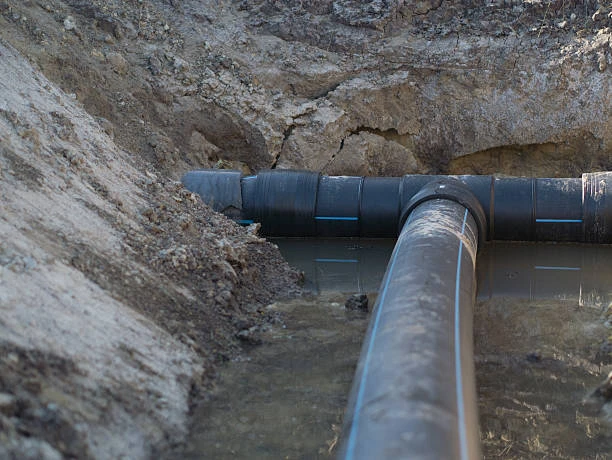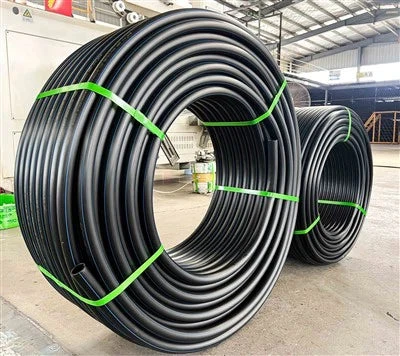Introduction
Plastic pipes are more sustainable than traditional alternatives like metal, concrete, and clay, offering a range of benefits that help reduce environmental impact and improve the efficiency of media distribution systems.
As cities and communities expand, the need for reliable and sustainable infrastructure becomes more critical. This is where plastic pipes—made from materials like PVC (Polyvinyl Chloride), HDPE (High-Density Polyethylene), and PP (Polypropylene)—are playing a transformative role. This article explores why plastic pipes are more sustainable in media distribution, covering the environmental, economic, and operational benefits they offer.
The Growing Demand for Sustainable Infrastructure
Plastic pipes have emerged as one of the most sustainable materials for a variety of media distribution systems, including:
- Water pipelines
- Gas pipelines
- Telecommunications and fiber optic conduits
Why Plastic Pipes Are More Sustainable
There are several key reasons why plastic pipes are more sustainable than other traditional piping materials. From production processes to end-of-life recycling, the benefits are significant in improving overall sustainability in media distribution systems.
1. Energy Efficiency in Manufacturing
The production of plastic pipes is more energy-efficient compared to traditional materials like steel, concrete, or copper. The energy required to manufacture plastic pipes is lower due to the relatively simpler processing steps. For instance, PVC and HDPE pipes are formed through extrusion processes, which consume less energy compared to the complex processes required for metals or concrete.
Plastic pipes, particularly HDPE, are produced from polymer materials that require less processing energy, making them a greener option from a production standpoint.
2. Lower Carbon Footprint
Plastic pipes have a significantly lower carbon footprint during production than materials like steel and concrete. The lighter weight of plastic pipes also leads to a reduction in transportation emissions, as fewer resources are needed to move them to construction sites.
For example, HDPE pipes can be installed using trenchless methods that reduce the need for excavation and heavy equipment, leading to less energy use and fewer emissions.
3. Longevity and Durability
One of the key sustainability benefits of plastic pipes is their longevity and durability. HDPE and PVC pipes are highly resistant to corrosion, scaling, and biofilm formation, which are common problems in metal pipes. This durability ensures that plastic pipes have a long service life, reducing the need for repairs or replacements.
For instance, HDPE pipes can last up to 50 years or more, while PVC pipes have a similar lifespan in underground applications.
4. Lightweight and Easier to Handle
Plastic pipes are significantly lighter than their metal or concrete counterparts. This reduced weight makes transportation, handling, and installation easier and more cost-effective. The lighter weight also means plastic pipes require less fuel for transportation, further lowering their environmental impact.
For media distribution systems, this translates into easier and faster installation, which reduces the time and labor costs involved. The lightweight nature of plastic pipes also allows for the use of trenchless installation methods, which reduce the need for excavation and disruption to the environment. This efficient installation process minimizes the environmental impact of construction projects and reduces the carbon footprint of the overall system.
5. Resistance to Corrosion and Chemical Damage
Unlike metal pipes, plastic pipes are resistant to corrosion, rust, and damage from chemicals or acidic environments.
The resistance to corrosion and damage makes plastic pipes a safer and more durable option for transporting media like water and gas, reducing the need for frequent replacements and repairs, thereby lowering maintenance costs and environmental impact.
6. Recyclability and End-of-Life Sustainability
An often-overlooked but critical aspect of sustainability is the end-of-life phase of materials. Plastic pipes, especially those made from PVC and HDPE, are recyclable, which significantly reduces their environmental impact when they reach the end of their useful life.
Recycling facilities can process both PVC and HDPE pipes into new products, such as new pipes or other plastic items, thereby reducing waste and promoting a circular economy. HDPE, in particular, stands out as one of the most widely recycled plastics, making it an ideal choice for infrastructure projects where end-of-life sustainability is a key concern.
The recyclability of plastic pipes helps minimize landfill waste and ensures that materials used in media distribution systems can be reused, further boosting the sustainability of the infrastructure.

Key Applications of Plastic Pipes in Media Distribution
1. Water Distribution Systems
Water distribution is one of the most essential functions of infrastructure, and plastic pipes have become the material of choice in modern water systems. Municipal water supply networks extensively use PVC and HDPE pipes because they resist corrosion, offer flexibility, and are cost-effective.
The longevity and recyclability of plastic pipes also reduce the need for frequent replacements, ensuring that water distribution systems are not only efficient but also environmentally friendly.
2. Gas Pipelines
HDPE pipes are increasingly being used for gas distribution due to their high strength, resistance to cracking, and flexibility. HDPE is resistant to corrosion from soil and moisture, making it a superior alternative to metal pipes, which can degrade over time. The reduced maintenance needs of HDPE pipes lead to lower operational costs and fewer disruptions to the environment.
Additionally, the ease of installation and reduced energy use during production make HDPE pipes a more sustainable solution for gas distribution networks.
3. Telecommunications and Fiber Optic Systems
Plastic pipes—particularly HDPE—are used extensively in telecommunications infrastructure due to their resistance to moisture, chemicals, and mechanical stress.
The durability and flexibility of plastic pipes allow for easy installation of fiber optic cables, while their lightweight properties minimize the environmental footprint of network construction. In addition, recycling HDPE conduits reduces the environmental impact of decommissioned telecommunication infrastructure.
The Future of Plastic Pipes in Media Distribution
As the demand for sustainable infrastructure continues to rise, plastic pipes are likely to play an increasingly important role in the distribution of media, from water to gas to telecommunications. With continuous innovations in material science, the performance and sustainability of plastic pipes will only improve.
The construction and utilities sectors will continue to embrace plastic pipes for their lower environmental impact, greater durability, cost-effectiveness, and recyclability.
Conclusion
Plastic pipes are more sustainable than traditional materials like metal, concrete, and clay, thanks to their lower carbon footprint, energy efficiency, long service life, resistance to corrosion, and recyclability. As sustainability becomes a more pressing concern for industries worldwide, plastic pipes will continue to play a pivotal role in shaping the future of infrastructure.
Frequently Asked Questions (FAQ)
1. What makes plastic pipes more sustainable than traditional materials?
Plastic pipes are more sustainable because they are energy-efficient to produce, have a long lifespan, are resistant to corrosion, and are recyclable. These features reduce the need for replacements and repairs, lowering the environmental impact.
2. What types of plastic are commonly used in piping systems?
The most common types of plastic used for pipes are PVC (Polyvinyl Chloride), HDPE (High-Density Polyethylene), and PP (Polypropylene). Each has unique properties suited to different applications like water, gas, and telecommunications.
3. Are plastic pipes environmentally friendly after their useful life?
Yes, plastic pipes, especially HDPE and PVC, are recyclable. They can be repurposed into new products, reducing landfill waste and supporting a circular economy.
4. How long do plastic pipes typically last?
Plastic pipes such as HDPE and PVC can last for 50 years or more, making them a durable option for long-term infrastructure projects.
5. Can plastic pipes be used for all types of media distribution?
Yes, manufacturers use plastic pipes for a variety of media distribution systems, including water, gas, and telecommunications, due to their flexibility, corrosion resistance, and cost-effectiveness.


















